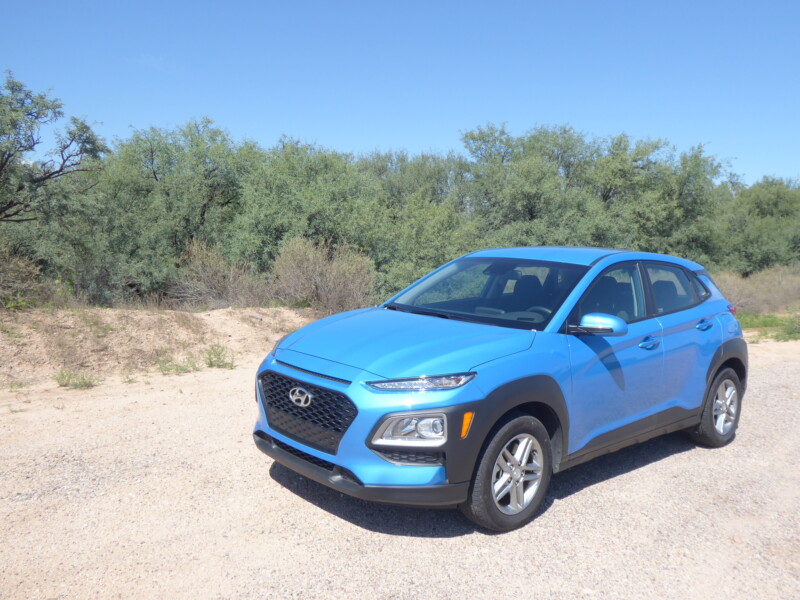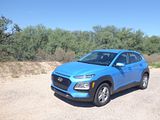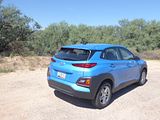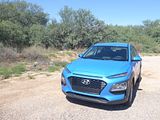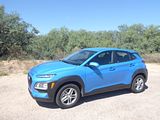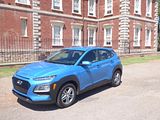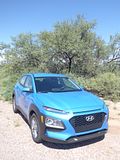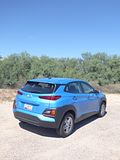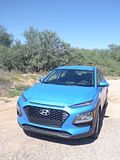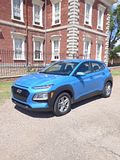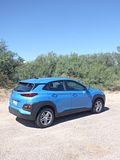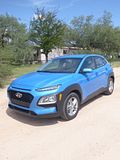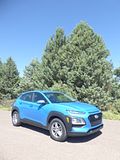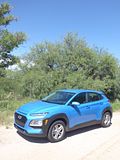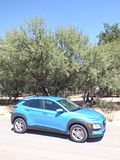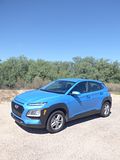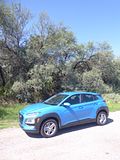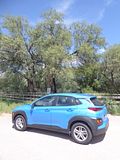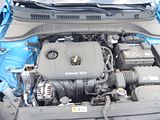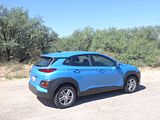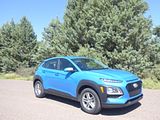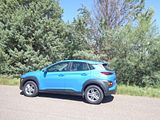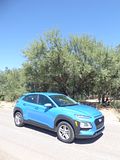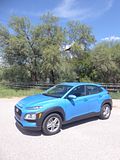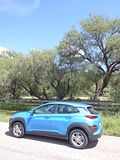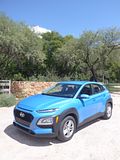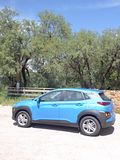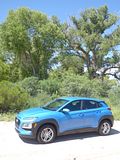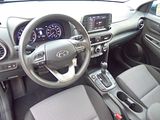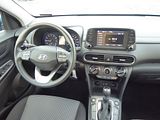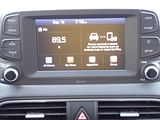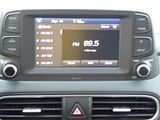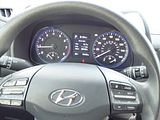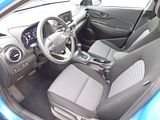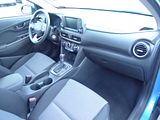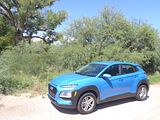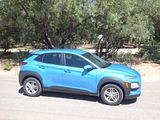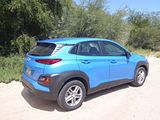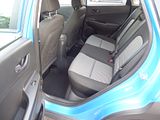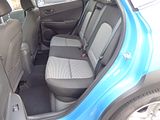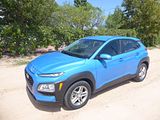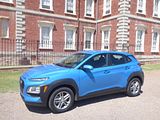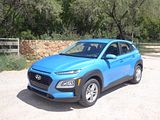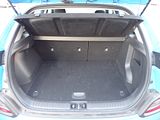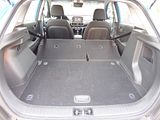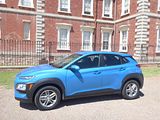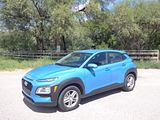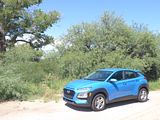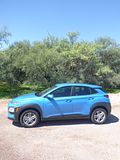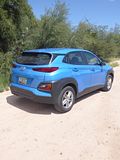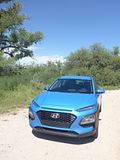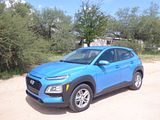As the market shifted towards the Crossover type vehicle, all the major manufacturers started to populate their product ranges with them. It was not long before you would think that they had all the different sizes and price points covered. But the past couple of years have seen yet more of these vehicles added to almost every range, filling in gaps that we did not even realise were gaps, with the result that there are a bewildering array of different models on offer, with seemingly little differentiation between them. Hyundai is a case in point. Their Crossover story started with what Europeans would call a large vehicle, the Santa Fe, back in 2002, and this was followed up in 2005 by a similar-looking but one size smaller machine called the Tucson. Such is the rate of model refresh that by the autumn of 2009 when the Tucson was due for replacement, Hyundai were close to launching a smaller offering, the ix20, as well as what amounted to a second generation Tucson but to conform with a new naming convention was rechristened the ix35, except in America where it retained the name of the city in Southern Arizona. To confuse matters further, the third generation of that car, launched at the 2015 Geneva Show once again globally bore Tuscon nameplates. With the larger Santa Fe, and smaller ix20 also on offer, that might have seemed like all that was needed, but no, in 2017 a model was squeezed into the range, a tiny bit smaller and cheaper than the Tucson, called the Kona. It arrived at the same time as a whole raft of market rivals, including the Kia Stonic, Seat Arona, Citroen C3 AirCross and MG ZS to name but a few. None of these would be offered to Americans, though, who got the Kona during 2018, a few months after the European on sale date. The first examples appeared in the Hertz US fleet in early 2019. It was a car I was keen to try, in any case, but having received a Tucson at the start of my September 2019 vacation, I was particularly pleased to be able get a Kona a few days later, making it easy to compare the two and to see what you gain or lose depending on the model you pick.
In rental car spec, both came with the same 2 litre 4 cylinder engine, known in Hyundai parlance as the Nu (they use Greek letters for most of their engines), generating the same 147 bhp as it does in the Tucson and for that matter the Veloster which I have also sampled on the same trip. In the Tucson, it was pretty clear that 147 bhp was not really enough, and I felt the car was underpowered – indeed that was my only significant negative for that vehicle. In the smaller and lighter Kona, it feels perfectly fit for purpose. The engine is smooth and refined and remains quiet unless you really work it hard. There was some road noise, very much dependent on he surfaces on which I was travelling, but on the whole, it was the noise from the air conditioning that dominated matters during the day. like all US market Kona models, this one came with a six speed automatic gearbox, complete with wheel-mounted paddles, which seemed well suited to the engine, as gearchanges were smooth and the Kona always seemed to be in the right ratio for the conditions, meaning I let the transmission do the work rather than shifting gears manually. There is a Drive mode you can select, and pressing Sport does give the Kona a greater feeling of urgency. I covered just under 400 miles during the day and the Kona consumed 12.15 US gallons in so doing, which computes to an overall consumption of 32.75 mpg US or 39.14 mpg Imperial. Not for the first time, the trip computer suggested a little better than this, making me suspect the car was not quite as full when I collected it as when I returned it.
All the other driving dynamics were good, too. Small Crossovers are not the obvious choice for driving fun, and this one is not going to wow as much as the better hatch models will, but it was still very capable in all regards. The steering assistance was well judged, with enough feel that you knew what the steered wheels would do, but not so that the system was unduly heavy, with the Kona being particularly easy to manoeuvre. The handling belied the slightly higher centre of gravity, so you could tackle the twisties with confidence and know that the Kona was not going to give you any unpleasant surprises, Body roll appeared to be kept well in check. Push really hard and it would understeer, but that is probably no bad thing for a car of this type. The test car did have the optional AWD system, as a badge on the tailgate informed me, and the diff lock control in the console provided a further reminder. This was not a day for testing out off-road prowess, but the ample ground clearance and relatively short overhangs should mean that you could venture off the tarmac if the need was there. This version of the Kona comes on 205/60 R16 alloy wheels, and these helped endow it with a smooth and comfortable ride. The brakes did everything you would expect, with plenty of feel in the pedal and the right amount of assistance. There is a conventional pull-up handbrake fitted between the seats. I had no issues with visibility. There is a generous (by modern standards) glass area, and a good field of view from the mirrors, the driver’s door one having a second piece of glass in the top corner to help alleviate any blind spot. The rear-view camera gave a clear projection onto the infotainment screen. The Lane Keep Assist feature did beep quite discretely every time I crossed a white line without indicating. You can turn it off, and I probably would were I keeping the car longer than a day.
The interior of the Kona is a perfectly acceptable place to be in, with a selection of good quality materials used for the dash, door casings and seat trim. Black is the dominant colour, but there are subtle inlays in this trim level (there are brighter options available higher up the range). Although the steering wheel was a plastic moulded item, it was pleasant enough to hold. Many of the components used will be familiar to anyone who has driven any other recent Hyundai. There are two large dials for speed and revs, with smaller ones for fuel level and water temperature inset into them, both grouped together in the same binnacle. They are the same basic dials as I had seen in the Veloster, but without the snazzy background graphics. The buttons on the steering wheel, to select digital display data, audio repeater and cruise control were the same, as were the column stalks which had the lights, complete with an auto function on the left hand one. The centre of the dash contains a high-mounted 7″ touch sensitive colour display screen for the infotainment system. On this entry level car, the functions offered were quite limited, with just AM and FM radio, Apple Car Play and Android Auto and Bluetooth if you paired your phone and various car settings. The graphics were crisp and clear and the system was easy to use, helped by the presence of buttons to the side of the unit. Below this were three rotary dials for the air conditioning system, which did a good job at keeping the car cool on a rather warm day. The centre console contains a button for the Drive Mode as well as the Diff Lock that you get with the AWD system, and there is a conventional handbrake here too.
As you might expect, seat adjustment is all manual in this entry level version. The driver gets a height adjuster for the seat as well as the backrest rake and fore/aft movement, but the passenger has to do without this feature. Height adjustable seat belts are included, and with a telescoping wheel moving in/out as well as up/down, I was able to get the driving position I wanted. I drove this car further than any of the others (to date) on this trip, around 400 miles in a day, which was a stern test of seat comfort and can report that it was not wanting. There was support in all the right places, and the cloth covering remained cool despite the intense Arizona heat. Low noise levels when cruising on the freeway at a steady speed belied the fact that this is a relatively small and cheap car.
Rear seat space is one area where you will clearly tell the difference between the Kona and the Tuscon. There is less room in every dimension here, as you would expect from the smaller car, but the Kona is still decently spacious, with plenty of legroom even when the front seats are set well back, and thanks to the tall body, no shortage of headroom either. There probably is not quite enough width for three adults, but with two aboard, the drop down central armrest with cup holders in he upper surface could be useful. There are nets in the back of the front seats and bins on the door for those odds and ends.
The boot is another place where you will realise you are looking at the smaller car, as there is quite a lot less room here than in the Tucson. The load bay is flush with the base of the tailgate and is a nice regular shape, but it is simply not that big and not that deep from top to bottom, though you may be able to put a few very small items around the space saver which is under the boot floor. More space can be created by dropping the asymmetrically split rear seats, which creates a flat and much longer load platform. Inside the cabin, there is a decent sized glovebox, a useful cubby in front of the gearlever, a lidded area that is quite deep but not that big under the central armrest and bins on the doors, which should all be sufficient for most people’s needs.
The US market gets a different set of choices for their Kona from those offered to the Europeans. Both continents get the much-lauded electric one, but for America, there is also a choice of two petrol engines, a 2 litre as was in the test car and the smaller but more potent 177 bhp 1.6 Turbo whereas Europe initially got the 1.6 Turbo petrol as well as a 122 bhp 1.0 Turbo and a 1.6 litre Diesel, this last being withdrawn in favour of the electric model. The US market petrol-powered Kona is available in four trim levels, while the Kona Electric has three. The trim levels generally correspond to each other and offer comparable features. Front-wheel drive is standard, and all-wheel drive is available (but not in the Electric) for $1,400. For most buyers, the Limited trim is the best choice. It is the first trim to have the turbocharged engine, as well as comfort features such as leather seats and automatic climate control. However, my test car was from the bottom of the range, the Hyundai Kona SE. This has an MSRP of $19,990. Standard equipment includes the 2.0-litre four-cylinder engine, a six-speed automatic transmission, a rearview camera, remote keyless entry, cloth seats, alloy wheels, two USB ports, Bluetooth, a six-speaker stereo, Apple CarPlay, Android Auto, and a 7-inch touch screen. Forward collision warning, lane keep assist, and a driver-attention monitor are standard too, as is a height adjuster for the driver’s seat. There are no major packages offered for the base SE trim. The Hyundai Kona SEL has an MSRP of $21,800. It adds proximity keyless entry, push-button start, a leather-wrapped steering wheel and shift knob, heated front seats, blind spot monitoring with rear cross traffic alert, satellite radio, and HD Radio. A Tech package is available, offering a sunroof, fog lights, and an eight-way power-adjustable driver’s seat. The Kona Electric SEL’s equipment roster closely resembles the petrol-powered Kona SEL, though it adds the Blue Link telematics system and adaptive cruise control. With an MSRP of around $25,550, the Limited features the turbocharged 1.6-litre four-cylinder engine, a seven-speed dual-clutch automatic transmission, automatic climate control, leather seats, automatic high beams, full LED headlights, Hyundai’s Blue Link telematics system, an eight-speaker Infinity premium stereo, and all the features listed in the Tech package. The Kona Electric Limited has many of the same features but adds wireless device charging as standard equipment. No notable packages are offered with this trim. The Hyundai Kona Ultimate (MSRP: $27,500) is the top-of-the-line for Hyundai Kona models. It has just about everything you can get in this car, including pedestrian detection, rear parking sensors, high-beam assist, rain-sensing wipers, an 8-inch touch screen, navigation, a head-up display, and wireless device charging. The Kona Electric Ultimate adds ventilated front seats and adaptive cruise control with stop-and-go capability. As with the Limited, there are no packages offered with the Ultimate.
I rather liked the Kona. Although it is not exciting, as indeed no cars are of this type, it ticked every single proverbial box in an accomplished way, with no discernible weakness that I could discover in my day behind the wheel, and although looks are always a subjective thing, I do rather like its appearance complete with the chunky black plastic features designed to make it look tougher than it probably really is. After spending a day behind the wheel of the Kona and one with its larger brother, the Tucson, I decided that although both are very capable products, it was the Kona I preferred, at least in the versions tested, largely because the smaller and lighter car did not feel as devoid of power as the Tucson had done. For sure, you do get less space in the Kona, most especially in the boot, but if you can live with this, I would say that this one is preferable to a Tucson, when comparing rental car specs, as I am doing. Indeed, the Kona was sufficiently appealing that having returned it, and seen it rushed away for cleaning, when it was brought back up for a new renter a few minutes later, having surveyed the very limited alternatives that Hertz had to offer on a Monday evening, it was very tempting to take it again. And given the much better weather forecasts for the day ahead, there would have been more and better photos of it had I done so. However, in the interests of sampling something else, I chose to leave it for another customer to enjoy. I just hope they did.

